
SMART fortwo
Generations Timeline, Specs and Pictures
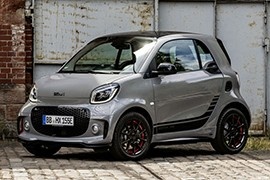
To better prepare for the future, the final generations of smarts made exclusively under the Daimler/Mercedes-Benz is exclusively electric.
Initially offered just as a powerplant option, the EQ version of the smart fortwo is the only one left after Geely bought 50 percent of smart GmbH. Future models will be offered exclusively with emission-free powertrains and will be manufactured mostly in China for the worldwide market.
The switch from gasoline and even diesel engines to an entirely electric powertrain lineup during the course of a single generation doesn’t come without hurdles, but the fortwo had it covered since day one because the current model was developed from the beginning to support battery power. The EQ fortwo’s electric motor is good for 82 horsepower and a healthy 160 Nm of instant torque. The separately excited synchronous motor is fitted in the rear, under the luggage space, just like on the ICE-powered fortwo, and is fed electric juice from a lithium-ion battery with a capacity of 17.6 kWh. The 96 HV cells in the battery give the model a range of up to 159 according to NEDC standards, which is more than enough for a day’s worth of running errands throughout a city.

The second generation of the SMART ForTwo was introduced to the market in July 2016.
It was the result of a cooperation between Mercedes-Benz and the French car-maker Renault.
The SMART went a long way since its first model, which was shown in 1998 but the idea remained the same. A very short vehicle with a rear engine and rear-wheel-drive. The car was highly fuel-efficient and had a chic appearance.
From the outside, the two-box shape of the car featured the same very short front side, where some would think it was the trunk. But it wasn’t. The front fascia featured a mesh-grille and a pair of headlights with an original design, unseen on other cars. The big bumper featured the fog-lights on its lower side. From the side, as in the first SMART ForTwo generation, the safety cell featured a different color than the rest of the car’s panels.
Inside the car, there were two seats as usual, but with plenty of room for the occupants. An unusual design for the dashboard showed a speedometer in front of the driver and two additional gauges on top of it, in the middle. On the center stack, an optional infotainment touchscreen was installed. The small trunk space could have been extended by folding down the passenger seat seatback.
The car’s qualities were not the acceleration times or the cornering speed. It was fuel-efficient and it could turn in 8.75 meters (28.7 ft) between walls. It was also, the shortest car on the European market. It was available with a manual or an automatic transmission for the gasoline engines. For the electric motor, it didn’t need any gearbox.
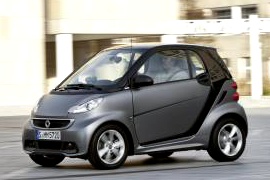
A city car by definition, the Smart Fortwo was a small car with a small engine, designed for daily traffic around town.
The small Smart offered good fuel consumption as well, however, it was not the most refined city car on the market.
The 2-seat subcompact was available as a hatchback coupe or a convertible in two trim levels: Pure and Passion.
The Pure included 15-inch wheels, a leather-wrapped steering wheel and keyless entry. The base model did not offer standard air conditioning, with the feature available as a stand-alone option.
The passion trim level added the Pure’s options and included alloy wheels, a glass roof, heated power mirrors, power windows and a sportier steering wheel.
Options for the more expensive trim level included wider tires, a metallic paint, LED daytime running lights, foglight, automatic lights, automatic wipers, cruise control, heated seats, a 4-speaker upgraded audio system, a touchscreen display with navigation and Bluetooth.
The Smart was powered by a rear-mounted 1.0-liter engine with 70 hp, a powerplant that was mated with a 5-speed automatic manual transmission (single-clutch). The transmission was not the most refined.
Safety wise, the Smart was equipped with side curtain airbags, knee bolster airbags, ABS, hill-hold assist, stability control and traction control.
While the Smart was not an expensive car in its entry level model, the base model did not offer too much for the value.
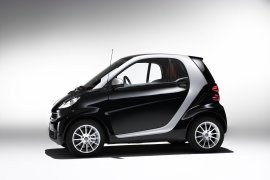
Smart unveiled the second generation of its micro-car in 2007 and showed its commitment to continue the struggling brand on the market, with some help from Mitsubishi.
Mercedes-Benz tried hard to keep the SMART brand alive after the Swiss company Swatch pulled back from the MCC (Micro Car Company) deal. But the Germans were determined to succeed and asked for help from Mitsubishi Motors Corporation. Together, they developed the ForTwo, which was sold only as a SMART product, and the FourFour, which was also sold as Mitsubishi Colt with a different shape but on the same platform.
The second generation of the ForTwo was longer than its predecessor. It was still short enough to fit inside a medium-sized pickup, but it was good for transporting two occupants inside. At the front, the 2007 model featured boomerang-shaped headlights above the smiling grille. There was no way how to tell where the bumper was ending, and the rest of the plastic body panels continued. All panels were removable, and the owner could just order a new set in a new color and changed the car’s color with only a few tools. In the back, the ForTwo kept the split-opening system for the trunk.
Inside, the two occupants enjoyed a roomy area. Its high seating position and the big glass area around the cabin reduced any claustrophobic sensation. The new instrument cluster featured a wide speedometer in front of the driver with an LCD screen at the bottom. On the top-middle of the dash panel, SMART offered an option for a tachometer and a clock.
Under the trunk’s floor, SMART offered a choice of gasoline or diesel engines and an MHD (micro-hybrid-drive) system that included a belt-driven starter-generator, which helped the car increase its fuel-efficiency.
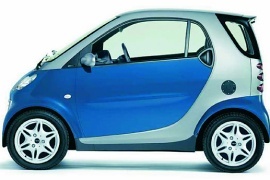
The smallest car from the European market, the SMART ForTwo, received a mid-life cycle impulse in 2003 for the coupe version and restyled the tiny car.
After Mercedes-Benz and Swatch watchmaker split, the German carmaker had to deal with the new brand and the MCC (Micro Car Company). Even though it knew nothing about small-sized vehicles, it pushed forward and launched the car with internal combustion engines. Swatch dropped the ball because Mercedes-Benz said that it was not a good time for an electric-only vehicle, and it was right.
On larger vehicles, it might be easier to create new lines or add further exterior details that could differentiate the refreshed version from its non-facelifted sibling. Still, on a phone-boot-sized car, it was more challenging. Still, the design team did an excellent job. There was a new pair of headlights with a shape like a tilted and skewed 8 number at the front. In the rear, the taillights sported a three-lamps system, vertically arranged on the corner, flanking the flip-down lower side of the tailgate.
Inside, SMART used a wide speedometer in front of the driver, mounted on the steering column. The carmaker offered an additional pair of dials mounted on top of the dashboard for a tachometer and a clock as an option. It was an actual analog clock.
There was a choice of three engines installed under the trunk. Mercedes-Benz upgraded all of them from their non-facelifted version. It was still the car with the smallest turbo-diesel engine in the world.
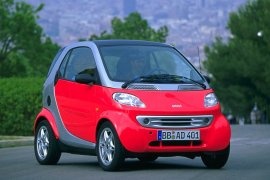
The first smart City Coupe saw daylight in 1998 when the German manufacturer rolled out a 2.5 meter long vehicle, renamed in the next year to smart Fortwo. In contrast to other mini cars, the Smart comes with a rear wheel drive which provides improved control and enhanced stability. Moreover, the smart City Coupe came with an impressive line-up of safety features, starting with ESP, ABS, front and side airbags and ending with the ASR technology developed by Mercedes. During the model’s lifespan, the company created a ton of versions, each with its unique features and colors schemes.























































